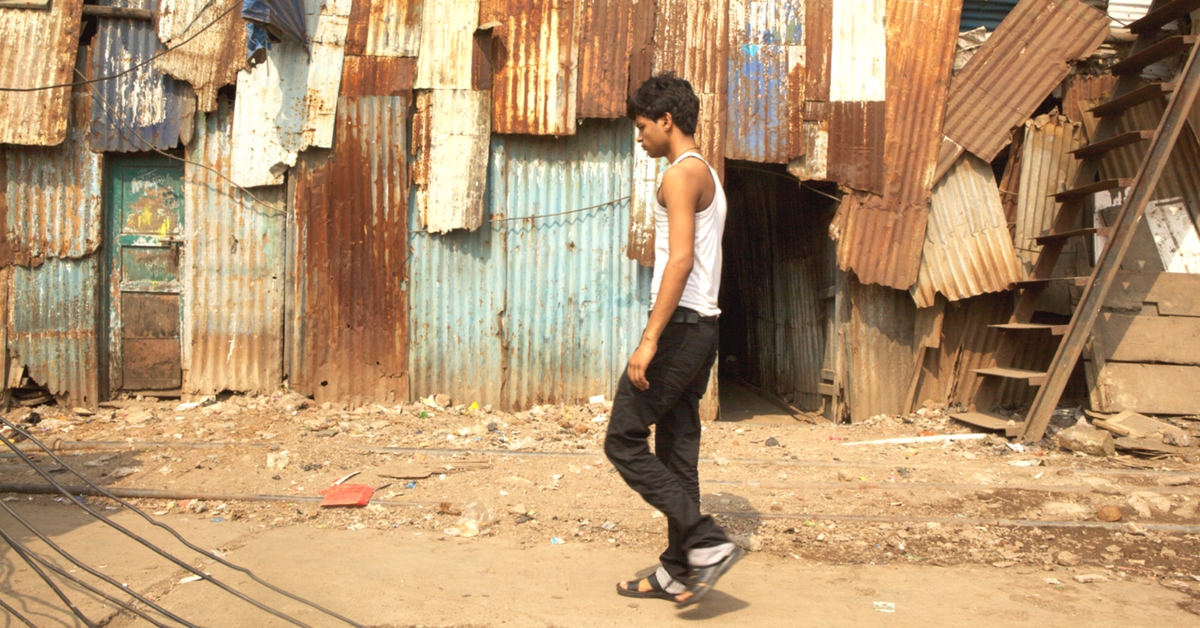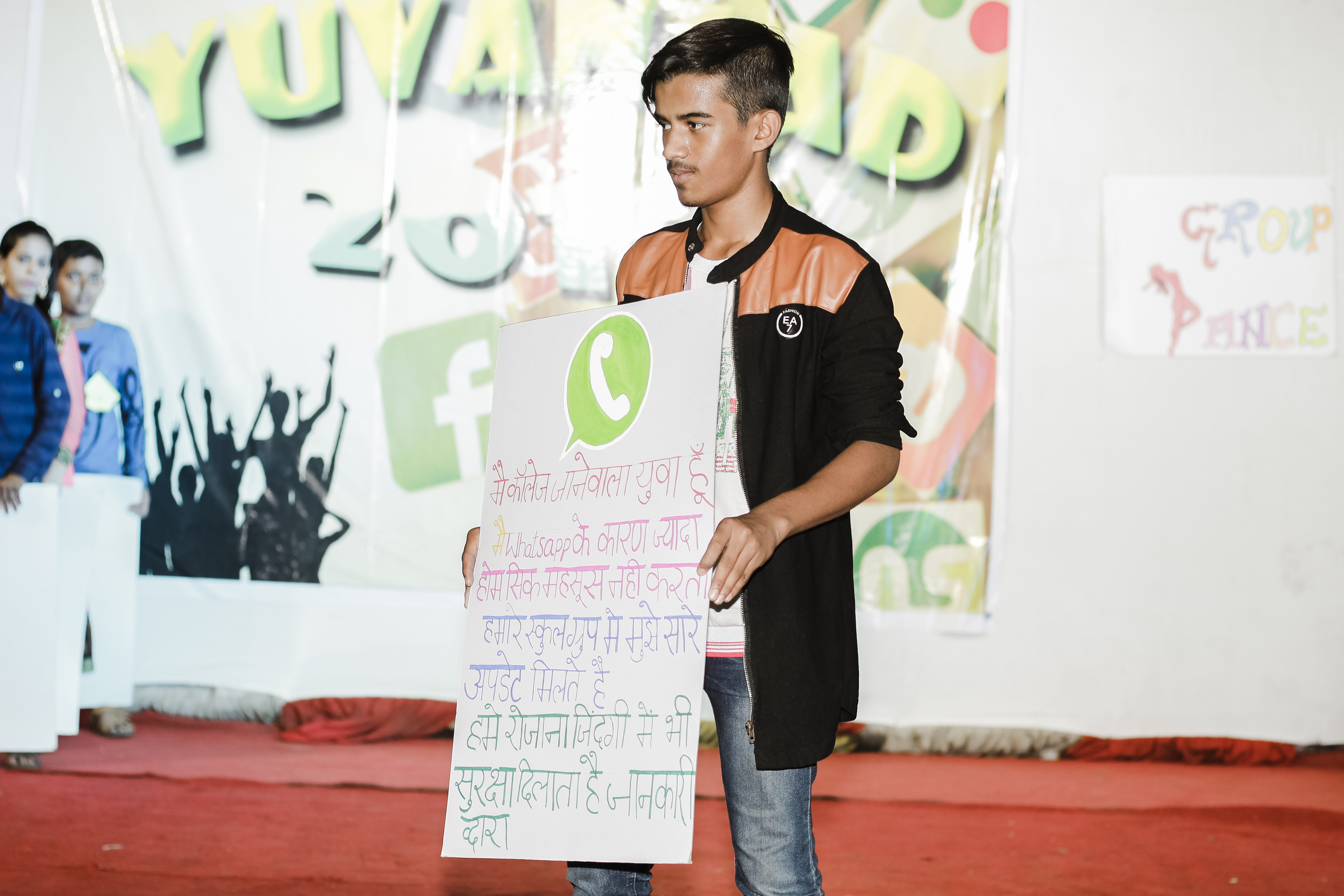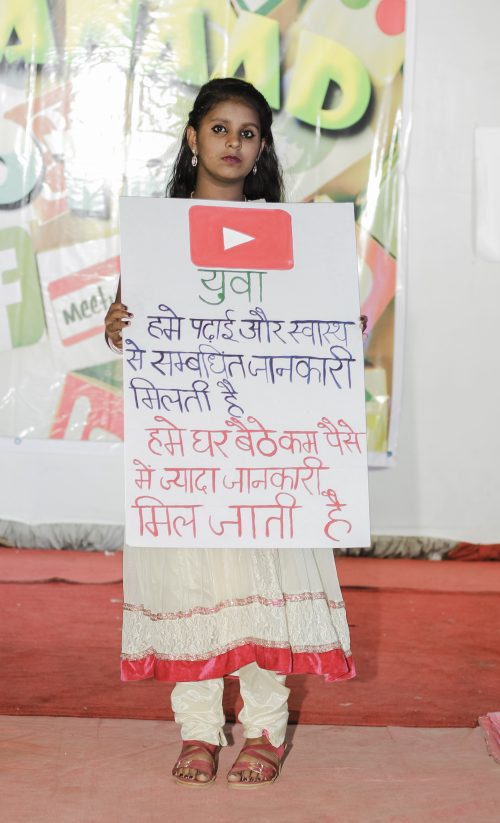Where Do Slum Kids Go When They Are Depressed? Here’s the Wonderful Answer
SNEHA, a Mumbai-based NGO, tackles mental health among adolescents in Mumbai slums

Adolescence is a vulnerable period of physical, emotional and mental turmoil. According to the World Health Organisation, approximately 10% of adolescents experience mental health problems – one of the most neglected issues among adolescents.
The scenario is no different among adolescents living in slums in urban areas, where depression particularly, is a common issue.

‘Material deprivation, social vulnerability, substance abuse and addiction can act as triggers of mental illnesses among adolescents living in slums,’ says Rama Shyam, Programme Director of Empowerment, Health and Sexuality Education of Adolescents (EHSAS), a programme targeted at adolescents (between 10 and 19 years of age) living in vulnerable settlements, implemented by Mumbai-based non-profit, SNEHA.
Also read: The First 1000 Days: We Can Transform Our Children With a Few Right Steps
The EHSAS programme, which has been implemented for about five years now, works directly with adolescents in vulnerable slum pockets to foster gender-equitable attitudes and improve physical, sexual and mental health.
“Our focus is on promoting physical and mental health and of course, adopting need-based interventions towards mental illnesses,” adds Rama. The EHSAS programme works across vulnerable settlements in Dharavi, Kandivali and Kalwa, reaching nearly 5000 adolescents.
Research has shown that mental disorders can trigger suicidal tendencies among adolescents. A study from Goa (16-24 year olds) shows that 3.9% of youths reported suicidal behaviours with females four times more prone to suicidal tendencies than males. This suicidal behaviour is associated with factors like absenteeism, independent decision making, premarital sex, sexual abuse, physical abuse from parents and mental disorders.
In India suicide among adolescents is higher than any other age groups i.e., 40% of suicide deaths in men and 56% of suicide deaths in women occur in the 15–29 age group.

The programme conducts robust and regular mental health screening, covering four large aspects: anxiety, depression, self-harm, and substance abuse.
“We screen adolescents using a screening form, which is administered to the adolescents in groups. The filled forms are then assessed by a qualified psychologist, who scores and identifies adolescents who need to be called in for counseling,” explains Eaishwarya Natekar, Consulting Psychologist, SNEHA.
The first session is used as a filter to ascertain whether the child needs intervention. In case the child is identified with mental health issues requiring further intervention, need-based therapeutic interventions are taken up. Any child in need of psychiatric medication is referred to the Sion hospital or the Chhatrapati Shivaji Maharaj hospital in Kalwa, based on the child’s location.
Prateek (name and demographics changed to protect privacy), a 15-year-old pursuing his Class 10 studies has been facing major anxiety issues, as he is unable to perform well in academics and particularly finds it very difficult to learn mathematics.
“Prateek’s parents were forcing him to study, pressurizing him to perform well, his parents believed that he was lazy and constantly procrastinating,” says Eaishwarya. “We noticed in our interactions with Prateek that he would particularly be stressed when his father was around and was unable to confide in his parents that he was finding it difficult to understand maths concepts,” she adds.
Psychological assessments with Prateek revealed that he suffered from mild depressive symptoms that had already lasted for over six months. It was also found that this affected his social skills and interactions and that the boy preferred to be alone. “This led to reduced appetite and general lethargy,” says Eaishwarya.
Prateek was referred to a psychologist for Intelligence Quotient assessment and to a psychiatrist for depression. “At the same time, we began psychotherapeutic interventions at the EHSAS centre,” explains Eaishwarya.
“We used the Jacobson Relaxation Technique to work on his anxiety and to reduce his negative self-image,’ she adds.

Picture for representation only. Source: Flickr
“We also taught his parents positive reinforcement techniques to enable them to encourage Prateek to do well. We counseled them on understanding his intellectual capacity and setting expectations accordingly,” Eashwarya adds. Prateek is already making progress and is on the road to becoming an optimistic, confident teenager.
Also read: How a Mumbai Girl Was Saved From a Child Marriage With the Help of an NGO & the Police
Future plans in EHSAS include holding group counseling sessions and engaging more with parents. “We hold sessions with parents of victims of child sexual abuse to coach them on how to deal with the post-trauma period,” says Eaishwarya. She adds that promoting awareness and reducing stigma of mental health issues is a major area of focus for the EHSAS team. “Bringing acceptance of existing mental illnesses is in itself a big step towards mental well-being,” Eaishwarya explains.
In tune with SNEHA’s core philosophy of working actively with public systems to institutionalize best practices in urban health, the EHSAS team is also working to mainstream its work by generating evidence from the field and sharing it with public health authorities.
“We hope it drives home the gravity of mental health issues among adolescents residing in vulnerable pockets in the city,” says Rama.
Like this story? Or have something to share? Write to us: [email protected], or connect with us on Facebook and Twitter.
NEW: Click here to get positive news on WhatsApp!
If you found our stories insightful, informative, or even just enjoyable, we invite you to consider making a voluntary payment to support the work we do at The Better India. Your contribution helps us continue producing quality content that educates, inspires, and drives positive change.
Choose one of the payment options below for your contribution-
By paying for the stories you value, you directly contribute to sustaining our efforts focused on making a difference in the world. Together, let’s ensure that impactful stories continue to be told and shared, enriching lives and communities alike.
Thank you for your support. Here are some frequently asked questions you might find helpful to know why you are contributing?


This story made me
-
97
-
121
-
89
-
167











